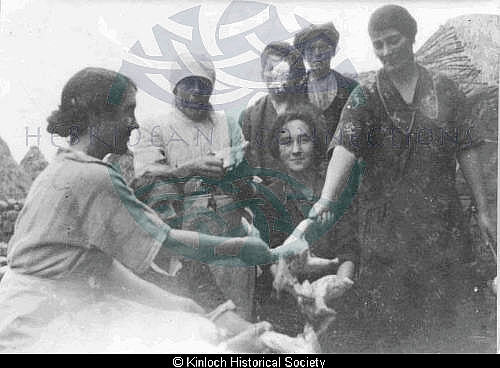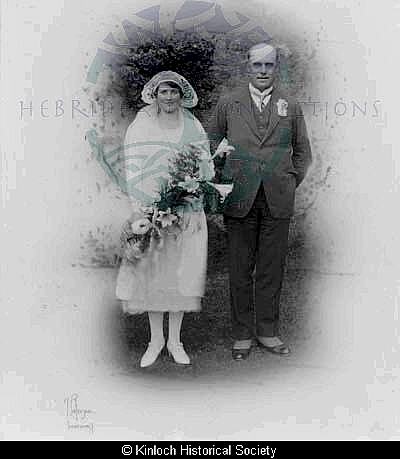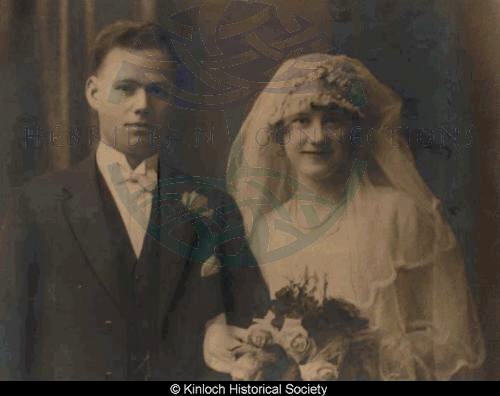38063: A Typical Hebridean Wedding
Account of a typical Hebridean wedding in the 1930s
Ma tha thu airson do mholadh, baisaich; ma tha thu airson do chainneadh, pos!
(If you want to be praised, die; if you want to be criticised, marry!)
A typical old phrase that was widely used throughout the Hebrides and is still used jovially today but on the day of a village wedding in the 1930s it would have been high spirits all the way. Preparation would have begun well in advance with a ‘reiteach’.
The prospective groom would always go to the bride’s house to meet with her parents and ask permission for her hand in marriage. It was a celebration in itself and had to be done. I suppose a ‘reiteach’ was making the way ahead, just like an engagement today. After the ‘reiteach’ had been performed, planning for the big day would begin in earnest with military precision. Army loads of women took control of the preparations. The house would be scrubbed to perfection and heaven help any poor man who would get in the way – he’d most likely get a good scrubbing as well.
Hens would start arriving a couple of days before the wedding tucked under the arms of women. The grim task of killing the unfortunate birds was left to the men as they had a knack to twisting the neck. A batch of women would then clean the hens. This was called ‘spionadh’. Outside the home, large drums would be set up with fires underneath for the purpose of cooking the masses of food as the only open fire in each black house couldn’t possibly cope with all the catering. Some of the women would take food with them and cook it in their own homes to ease the burden a little on the wedding house.
When the big day would finally dawn, everyone from the village and beyond would walk to the local church in Kinloch or to the mission house in Arivruach where the formalities would take place. After the ceremony, they would have a parade back to the house with a piper leading the way. The bride always wore white and would have carried either a small posy, a bag or a bible in her hands.
Recognition flags would have greeted the parade back to the house. Flour and oatmeal bags called ‘bollan’ would be washed out and the flags pegged to a post at the gate of the houses. At the house the celebrations would get under way. Kegs of beer would start flowing and several table settings would have to take place due to the sheer volume of people attending. The first setting always consisted of the bride and groom, the immediate family and first cousins. Depending on where you were in the pecking order you might not get to eat until after midnight. Young women from the village played waitress for the evening and served up a sumptuous four course feast consisting of soup, the infamous chickens, meat and trifle served in the prettiest crystal bowls followed by tea in delicate china cups with an array of home baking.
Out in the byre the men gathered round the key and keep each other entertained while the women gathered in the house waiting for the dance to start. Anyone with any musical talent would perform usually on the old style melodeon although occasionally someone would play the fiddle. Eventually, after a full cooked breakfast, people would start to drift to their respective homes and get some well earned rest before another round of celebration would start again in the evening.
Kinloch Historical Society
Details
- Record Type:
- Story, Report or Tradition
- Type Of Story Report Tradition:
- Story
- Record Maintained by:
- CECL


